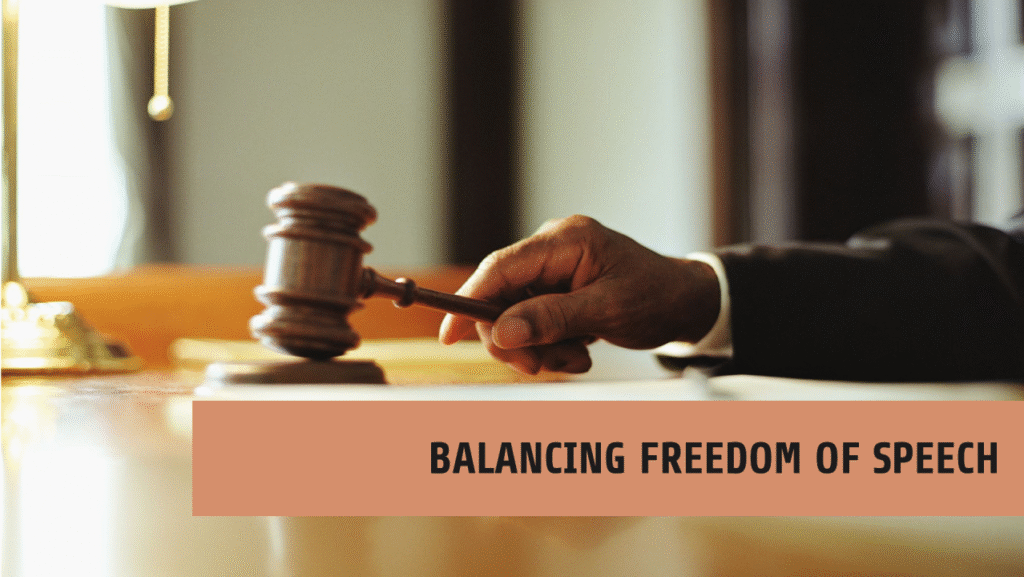Published On: September 26th 2025
Authored By: Anjali Sharma
Asian Law College
COURT : Supreme Court of India
BENCH : Justice Gyan Sudha Misra and Justice Markandey Katju
DATE OF JUDEGMENT : 7th March 2011
BRIEF FACTS OF THE CASE
- Aruna Ramchandra Shanbaug was a staff nurse at King Edward Memorial Hospital , Parel , Mumbai.[1]
- On 27th November 1973, Aruna Ramchandra Shanbaug was attacked by a sweeper of the same hospital. The sweeper wrapped a dog chain around her neck in order to take control of her.[2] The act was done to sexually assault her .
- When the Sweeper tried to rape her but on finding out that the victim was menstruating at that time, then he sodomized her which means he carried out un natural sexual intercourse with her.
- In order to immobilize her, he further twisted the chain around her neck leaving her in a unconscious state.
- On the next day I.e 28th November 1973 at 7.45 am , a cleaner found her in an unconscious condition in the same room soaked in blood. It was found out that due to the strangulation of the chain around her neck , the oxygen supply to her stopped and her brain got severely damaged. As per the doctors of the Hospital, severe injury to the cortex and other important parts of her brain. Additionally, she also suffered a brain stem contusion injury with associated cervical cord injury.
- Aruna stayed in a vegetative state for 36 years following her age to be approximately 60 years.
- Pinki Virani filed a writ petition under Section 32 of the Constitution of India before the Supreme Court of India.The Petition was regarding freeing Aruna from this age long turmoil of being bed ridden for 36 long years.
- In legal terms, the Petition asked for Euthanasia due to her prolonged condition. The Petition also mentioned that she had no improvements in her vegetative state and had no knowledge of her surroundings and perceived virtually as a dead person or individual.
- The Petitioner further claimed for the victim to be allowed to die peacefully by the process of Euthanasia and put an end to her prolonged suffering.
- Following the Petition, the Supreme Court of India appointed a team of doctors to closely and thoroughly examine her condition and present a detailed medical examination report before the Hon’ble Court about Aruna’s state.
ISSUES RAISED
- Whether its lawful or legal to withdraw life support from a person who has been in a permanent or prolonged vegetative state?
- Whether in such a situation, the will of the person in question to live should be respected or taken into consideration or not?
- Whether the family of the person in question has the authority to request the withdrawal of the life support systems which have been sustaining her life if the concerned person isn’t in a state to do that voluntarily?
ARGUMENTS RAISED
PETITIONER
- The learned counsel for the Petitioner cited certain precedents from the Indian Judiciary to prove their contentions.
- The counsel referred to the case Vikram Deo Singh Tomar V. State of Bihar[3] in which it was contended that every individual is entitled a good quality of life in order to be consistent with his/her human personality.[4] The Hon’ble Court further contended that an individual’s life shouldn’t be reduced to the situation where the individual has absolutely no control over his/ her life with no knowledge of their surroundings.
- Further, the learned counsel referred to the case named Gian Kaur V. State of Punjab[5] where the court laid down that Right to Life and Personal Liberty under Article 21 of Constitution of India also includes the Right to Die.[6]
- The learned counsel further highlighted the importance of Right to Die with dignity in cases where the person or the individual in a permanent or prolonged vegetative state.
- The counsel was quite specific in stating that Right to Die with dignity would be better option in the scenarios where the person has been facing a prolonged suffering and clearly doesn’t have any scope for improvement.
- Moreover, the counsel explained the situation by taking into account the vicious suffering of Ms. Aruna Shanbaug from the last 36 years. And by taking the decision to give her the Right to Die with dignity, the Hon’ble court would be allowing her to end her suffering with dignity and respect.
RESPONDENT
- The learned counsel appearing from the side of the Respondent I.e Union of India stated that Ms. Aruna Shanbaug has the right to live in her present state since the hospital staff was quite willing to take care of her till the day she succumbs to death naturally.
- The counsel stated that the present medical state of Ms. Aruna Shanbaug doesn’t justify the Petitioner’s contention to terminate her life through the withdrawal of food or the required medical support.
- Further, it was contended that the Law Commission of India Report on Euthanasia has not been accepted by the Government of India.
- It was also stated that Ms. Pinki Virani has no particular locus standi in the matter involved and has absolutely no right to file such a writ petition . Instead, the KEM Hospital only has the right to file a such a writ petition on behalf of Ms. Aruna Ramchandra Shanbaug since it was the KEM Hospital and its staff which had been taking care of Ms.Aruna from the past 36 years.
- Moreover, the learned counsel submitted that there might be a cure for the medical state Ms.Aruna Shanbaug is in which might seem incurable right now. So, by allowing the process of Euthanasia to be done upon her by the Court would be an injustice.
RELEVANT PROVISIONS/STATUTES
- ARTICLE 14 ( RIGHT TO EQUALITY)
Article 14 is enshrined under Part III of the Constitution of India that prohibits unequal treatment. It basically states that everyone is equal before the law and entitled to equal treatment. Further, this implies that no individual should be discriminated based on their race, colour, sex, class or religion etc.
The Supreme Court of India in the case of Shayara Bano V. Union of India[7] stated that the practice of Triple Talaaq is unconstitutional and is strictly violative of Article 14 of the Indian Constitution.
- ARTICLE 21 ( RIGHT TO LIFE AND PERSONAL LIBERTY)
Article 21 of the Indian Constitution protects the citizens and the foreigners through having Right to Life and Right to Personal Liberty. Right to Life includes Right to Shelter, Right to sleep, Right to safe drinking water, Right to healthy environment, Right to social justice and much more.
In the case of Vishakha V. State of Rajasthan[8] , the Apex Court laid down that Sexual Harassment at Workplace is violative of Article 14 and Article 21 of the Constitution of India.
- ARTICLE 32 ( RIGHT TO CONSTITUTIONAL REMEDIES)
Article 32 of the Constitution of India enshrined under Part III focuses upon protection of the rights of the citizens. It empowers the citizens to approach the Apex Court I.e the Supreme Court of India in case their comes a violation of their fundamental rights. The Hon’ble Court provides relief to the citizens in the form of granting of writs which are of different forms I.e Habeas Corpus ; Mandamus ; Certiorari ; Prohibition and Quo Warranto.
In the landmark case of ADM Jabalpur V. Shivkant Shukla[9] also known as the Habeas Corpus case stated that the writ of Habeas Corpus cannot be suspended for the citizens of the country even when there has been a declaration of Emergency in the country.
- SECTION 306 UNDER THE INDIAN PENAL CODE 1860
Section 306 of IPC deals with the Abetment of Suicide where one individual instigates the other to commit the act of suicide. Abetment to Suicide is non bailable and cognizable offence.The punishment for the same is imprisonment upto 10 years and shall also be liable to fine.
In the case of Gian Kaur V. State of Punjab[10], the Supreme Court of India held Section 306 of the Indian Penal Code 1860 to be constitutionally valid.
- SECTION 309 UNDER THE INDIAN PENAL CODE 1860
Section 309 of IPC deals with the punishment to commit suicide in India. The punishment for the same is imprisonment for 1 year or fine or both.[11]
In the case of P.Rathiram V. Union of India [12], it was held Section 309 of the Indian Penal Code to be violative of Article 21 of the Indian Constitution as the Article gives the citizens their Right to Life and Personal Liberty.[13]
JUDGEMENT
The Supreme Court of India on 7th March 2011 gave the judgement for the case of Aruna Ramchandra Shanbaug V. Union of India and others. The landmark judgement acknowledged that there is no specific statutory provision for the circumstances in cases like this where the victim is in a permanent vegetative state for years. Further, the court wasn’t satisfied with the contentions made by the Respondents and gave the judgement in favour of the Petitioner and granted the order to provide passive Euthanasia to Ms. Aruna Shanbaug by removing her medical support and putting an end to her prolonged suffering from the last 36 years.
RATIO DECIDENDI
The Hon’ble Court held that active euthanasia is illegal in India but further acknowledged that passive euthanasia can be provided to the person who has been in a vegetative state for years with no sign of improvement.
Moreover, the court also highlighted the principle of parens patriae which means that the state is authorized and empowered to protect its citizens with disabilities.
OBITER DICTA
The Supreme Court of India expressed the idea of the social understanding of the concept of Euthanasia and put forward its potential misuse.[14]
The Bench further advocated to remove Section 309 of Indian Penal Code from the ambit of being a criminal offence and suggested that there should be enough consideration to the citizens dealing with mental health and suicidal issues.
REFERENCES
[1] Aruna Ramchandra Shanbaug V. Union of India & others , India Available at : https://indiankanoon.org/doc/235821/ ( last visited on April 25th 2025)
[2] Aruna Ramchandra Shanbaug V. Union of India & others , India Available at : https://indiankanoon.org/doc/235821/ ( last visited on April 25th 2025)
[3] 1988 AIR 1782
[4] Aruna Ramchandra Shanbaug V. Union of India & others (2011), India Available at : https://blog.ipleaders.in/aruna-ramchandra-shanbaug-vs-union-of-india-others-2011/ ( last visited on April 25th 2025)
[5] 1996 AIR 946
[6] Aruna Ramchandra Shanbaug V. Union of India & others (2011), India Available at : https://blog.ipleaders.in/aruna-ramchandra-shanbaug-vs-union-of-india-others-2011/( last visited on April 25th 2025)
[7] AIR 2017 SC 4609
[8] AIR 1997 SC 3011
[9] 1976 AIR 1207
[10] 1996 AIR 946
[11] Aruna Ramchandra Shanbaug V. Union of India & others (2011), India Available at : https://blog.ipleaders.in/aruna-ramchandra-shanbaug-vs-union-of-india-others-2011/( last visited on April 25th 2025)
[12] 1994 AIR 1844
[13] Aruna Ramchandra Shanbaug V. Union of India & others (2011), India Available at : https://blog.ipleaders.in/aruna-ramchandra-shanbaug-vs-union-of-india-others-2011/( last visited on April 25th 2025)
[14] Aruna Ramchandra Shanbaug V. Union of India & others (2011), India Available at : https://blog.ipleaders.in/aruna-ramchandra-shanbaug-vs-union-of-india-others-2011/( last visited on April 25th 2025)




